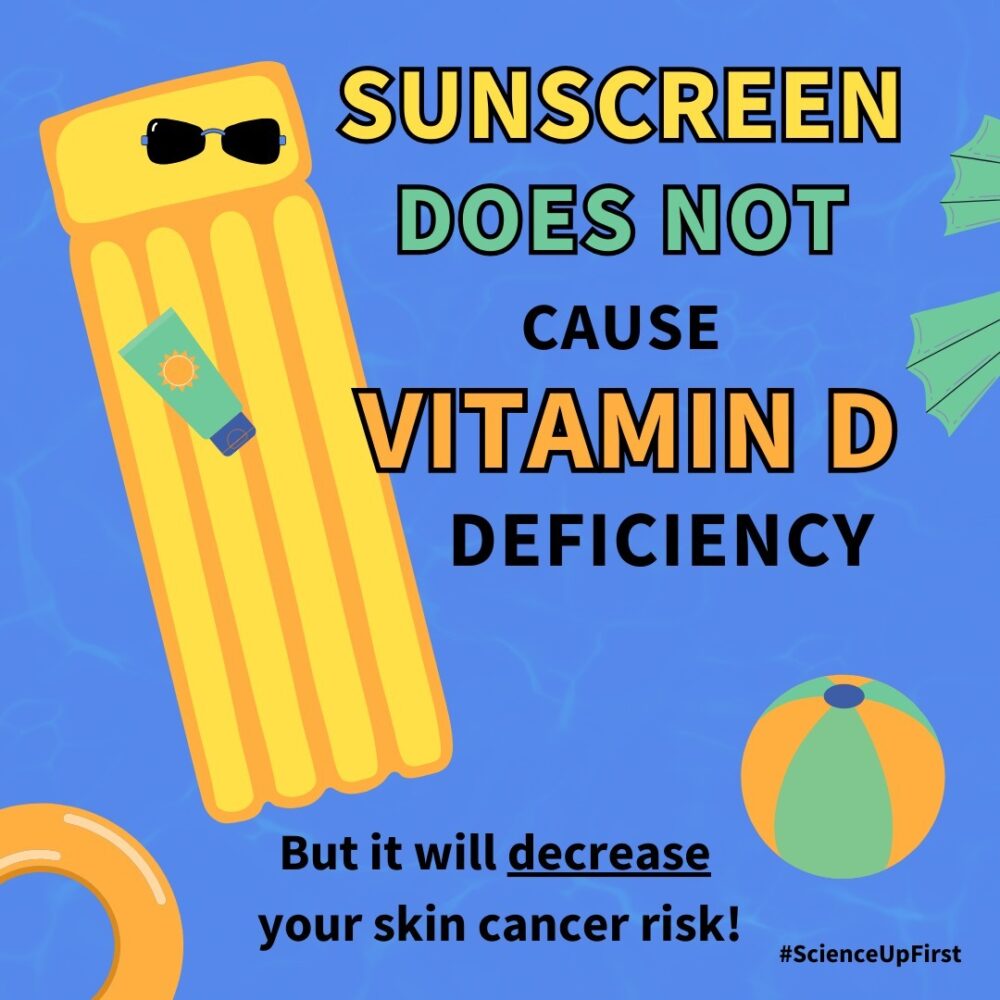
Protecting yourself against biting insects not only helps prevent you suffering from that uncontrollable itchiness, but also helps to prevents disease transmission (i.e. West Nile virus, Lyme disease) (1).
One way to protect yourself is to cover as much skin as possible with tucked-in, loose, light-coloured clothes made from fabric such as nylon or polyester (2).
But what if it’s super hot outside or you really want to feel the summer breeze on your skin? What should you do?
First, you should apply sunscreen (SPF30 or higher; reapply every 2 hours) (3). Then, after at least 20 minutes have passed, you can apply your insect repellent (1,4). Make sure to choose a registered Pest Control Products (PCP number) and avoid products that combine sunscreen and insect repellent in one (1).
Just like sunscreen, insect repellent should always be applied following the instructions on the label, which should include information about (1):
- The active ingredient (e.g. DEET, Icaridin)
- The concentration
- Age restriction
- Maximum number of application per day
This is important, as some products might be dangerous for younger children or recommended at lower concentration than what is recommended for adults (1,5).
Additionally, insect repellent should (2,5,6,7):
- Not be applied near the eyes, the mouth or any fresh cuts or irritated skin.
- Only be applied to exposed skin or clothing.
- Be washed off once back indoors.
- Not be sprayed near food.
- Not be inhaled.
- Be sprayed on hands before it is applied to your face or a child’s skin.
No product is 100% effective, so what should you do if you get bitten despite your efforts? Most insect bites, while being uncomfortable, don’t need treatment (i.e. an exception is Lyme disease, see reference on how to recognize symptoms (8)) (9). Insects bites should be washed with soap and water. If the swelling or the itching is too uncomfortable you can apply (10,9,11,12):
- An ice pack for 10 min at a time
- An antihistamine or hydrocortisone ointment
- A calamine lotion
Share our original Tweet!
You can protect yourself against biting insects by:
• Covering as much skin as possible
• Applying insect repellentMake sure you know how to safely use insect repellent by reading this post https://t.co/cEJYhhYQgq#ScienceUpFirst pic.twitter.com/eDLzoG48ns
— ScienceUpFirst | LaScienced’Abord (@ScienceUpFirst) August 30, 2023
View our original Instagram Post!
View this post on Instagram
- Personal Insect repellents | FR : Insectifuges
- Insect bite prevention | FR : Prévention des piqûres d’insectes
- Is all this sunscreen jargon clear as mud? | FR : Le jargon sue les crèmes solaires peut te faire tourner la tête !
- Sunscreen and insect repellent: How to apply them together
- FR : Écran solaire et chasse-moustiques : comment les appliquer ensemble?
- Mosquito bites – Symptoms and causes
- Using Insect Repellents Safely and Effectively
- Choosing an Insect Repellent for Your Child
- Lyme disease: Symptoms and treatment | FR : Maladie de Lyme : Symptômes et traitement
- Mosquito Bites
- Mosquito Bite Symptoms and Treatment
- Insect bites and stings: First aid
- Insect bites and stings




